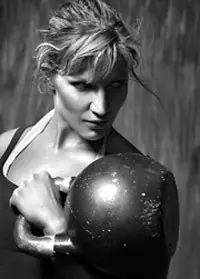The accessibility of kettlebell lifting allows training to be carried out in a wide variety of conditions, individually or in small groups. It is known that cyclic kettlebell exercises are associated with great physical stress, so it is necessary to constantly control their influence on the body of those involved.
Proper construction of the training process, a reasonable combination of heavy loads and rest, constant monitoring of the body’s condition is the key to good sports results. Characteristic for kettlebell lifting quick training effect, which is especially attractive to young people. However, it should be remembered that only a gradual increase in loads, regularity and availability of weight training will allow you to achieve the desired results. This is especially important for self-trained students.
Fans of kettlebell lifting sometimes set themselves impossible tasks and strive to solve them forcefully, quickly, “nosebleeds”, at any cost, without taking into account your physical data. They want to quickly become record holders, and not yet having really mastered the “sixteen”, newly minted weightlifters take on exercises with a 32 kg kettlebell! At the same time, young athletes do not think about the question at all: “Is their body ready to perform an exercise with a 32 kg kettlebell?”. They enhance their capabilities through effort of will or application pharmacological stimulants, try to continue classes against the background of fatigue. However, there is a limit to fatigue, exceeding which is harmful to health...
Overcoming fatigue, the body brings into play its reserve forces. Fight with fatigue (up to a certain level, the value of which has not yet been established) stimulates a person’s potential capabilities. That is why everyone should determine for themselves the permissible limits of the load, using, firstly, indicators of well-being, and secondly, various physiological tests. For those who don’t know what physiology is, read more at the link. And most importantly, the body needs rest, at least short-term. The ability to relax is a kind of art. Unfortunately, this issue has not yet received enough attention in sports.
By the way, here’s an interesting fact: many professional athletes even use video and audio diaries. After all, the captured video clip of your movement technique is available for both slow-motion viewing and frame-by-frame pauses, which will greatly simplify and facilitate the subsequent analysis and elimination of errors and shortcomings in the technique. And the use of a voice recorder instead of a pencil and notepad has long proven its effectiveness in our turbulent age of technological progress.
Of the subjective indicators of an athlete’s well-being, only one criterion can be named: if an athlete sleeps well at night after intense training, if in the morning he feels fresh, rested, and has an even greater desire to train, then the training was carried out with an optimal load. Otherwise, it is worth saying with a high degree of certainty that overwork and the volume and intensity of the load should be reduced or its nature changed.
However, the symptoms of approaching overwork are very diverse and individual, so it is not always possible to catch them. Experienced athletes, for example, have developed effective methods for assessing the condition of their bodies.
During training, many athletes are guided by heart rate indicators, especially during endurance work. Medical scientists have found that for any age group there is an optimal load that creates the most favorable mode of heart activity - a certain range of heartbeats.
If, for example, during a workout with weights, having carried out repeated cyclic lifting of weights, the pulse rate does not reach the lower limit of the range, the exercise will not enhance the performance of the heart, and, therefore, will not give the desired training effect; if you go beyond the upper limit of this interval, the load may become excessive for you.
Focusing on heart rate allows everyone to independently manage the training process in any conditions. It should be measured immediately after performing the exercise, having completed the next approach to lifting the weight, in the first 10-15 seconds, since recovery occurs very quickly and the readings may be erroneous.
For those who want to qualitatively improve their health and increase the level of physical development using kettlebell exercises, it is enough to train within the heart rate range corresponding to their age. For those who strive to achieve high athletic results, part of the training (10-15%) should be carried out at an increased heart rate.
Table
| Age,
years |
Optimal value
Heart rate, (bpm) |
Age,
years |
Optimal value
Heart rate, (bpm) |
| 20 | 140—170 | 45 | 123—149 |
| 25 | 137—166 | 50 | 119—145 |
| 30 | 133—162 | 55 | 116—140 |
| 35 | 130—157 | 60 | 112—136 |
| 40 | 126—152 |
Keeping a self-control diary will help monitor the functional state of the body and improve athletic performance.
Kettlebell training videov/emQw0YXEF74
Kettlebell training videov/Oq_DSWRXiiw
Post Views: 104


